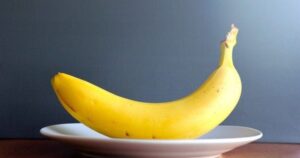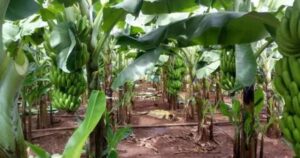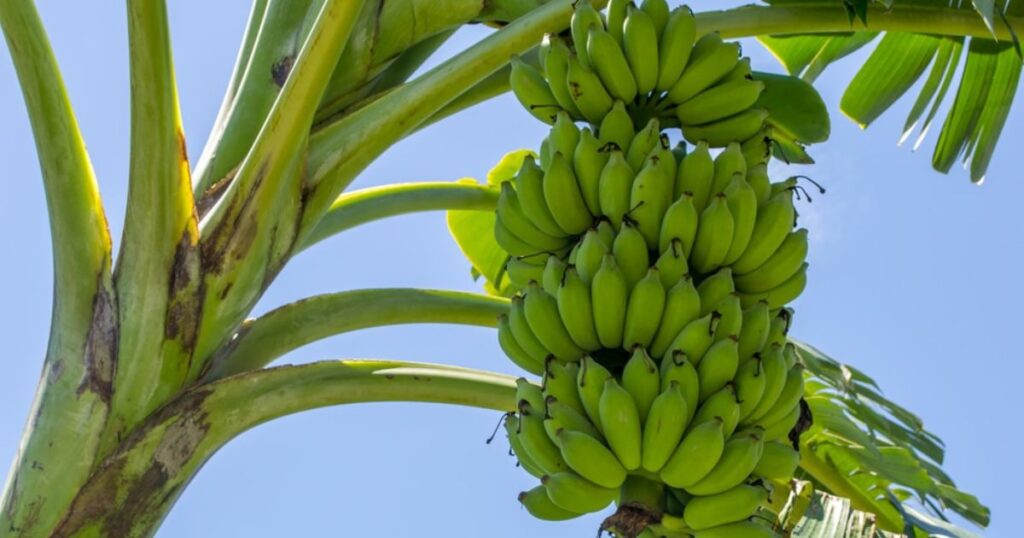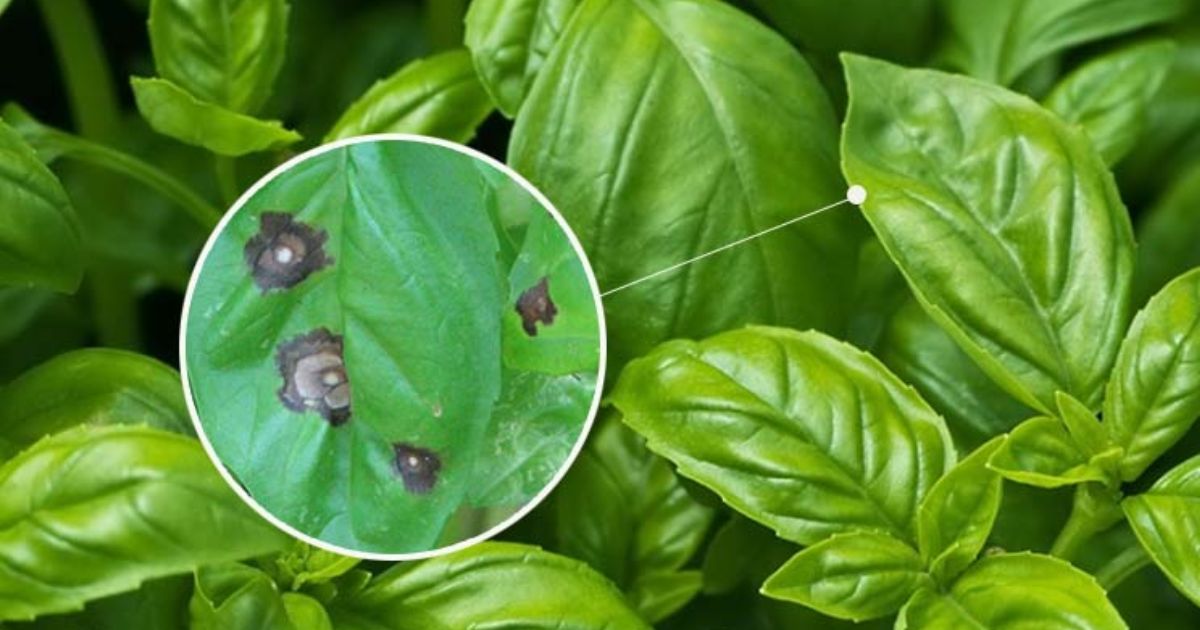Did you know that bananas, one of the most popular fruits worldwide, aren’t technically fruits in the botanical sense? In fact, the banana plant is classified as both an herb and a berry, which may surprise many. Despite their tree-like appearance, banana plants lack the woody stem that defines trees, and instead, they grow from a “pseudostem” made of tightly packed leaves. This unique structure qualifies the banana plant as an herb.
Even more surprising is the fact that bananas themselves are considered berries. Unlike the typical sweet, small berries we think of, bananas meet the botanical definition of a berry because they develop from a single ovary and contain seeds (though commercially grown bananas are usually seedless). These fascinating details reveal that bananas are much more than a simple snack—they challenge our everyday understanding of plants and fruits. So, why exactly are bananas both an herb and a berry? Let’s dive into the science behind this unusual classification.
Why the Banana Plant is an Herb
According to botanical definitions, a plant without a banana tree wood stem is called a herb and typically dies back to the ground at the end of the growing season. Unlike trees or shrubs, which have hard, permanent structures, herbs have softer, green stems that are not rigid or wood-based. This definition might be surprising when applied to large plants like the banana, but it fits perfectly within the framework of botanical classification.
A banana plant is classified as an herb because it does not develop a woody stem, which sets it apart from typical trees. Instead of having a solid, wood-based trunk, the banana plant’s structure is formed by a “pseudostem,” which is essentially a false stem made from tightly packed layers of leaves. These leaves grow in a circular fashion, creating the appearance of a trunk, but in reality, this structure lacks the banana tree wood that defines a true tree.
This unique structure is crucial in understanding why the banana plant is considered an herb. Since the pseudostem is made of soft, green leaf material, the banana plant falls under the herb category, even though it grows to considerable heights and resembles a tree. This classification matters because it challenges our common assumptions about the relationship between plant size and structure, showing that even large plants like the bananas can be considered herbs under botanical guidelines.
Why the Banana is Considered a Berry

According to botany, a berry is a juicy fruit that develops from a single ovary, with seeds embedded within the fruit’s flesh. This definition is more specific than what many people typically associate with berries, which often leads to some confusion. For example, while strawberries and raspberries are commonly thought of as berries, they don’t actually meet the botanical criteria. On the other hand, fruits like tomatoes and kiwis, which may not look like traditional berries, are classified as such because they develop from a single ovary.
Is a banana a berry perfect example of this botanical definition? Each banana develops from one ovary and contains small, undeveloped seeds within its flesh. While these seeds are often not fully formed in the cultivated bananas we commonly eat, they are still a crucial part of the fruit’s structure. This seed arrangement is what qualifies the banana as a berry in botanical terms.
Interestingly, the texture and sweetness of bananas further align with the characteristics of berries, even if they do not resemble the typical small, juicy fruits most people think of. So, while bananas may not fit our conventional image of a berry, they meet the scientific criteria, making them a fascinating example of the complexities found in the world of banana tree type of plant classifications.
Bananas Aren’t Trees, and They’re Not True Fruits
Despite their towering presence and tree-like appearance, bananas are often misunderstood in terms of their classification. A common misconception is that bananas grow on trees. In reality, banana plants are large herbs, not trees, and this distinction is crucial in understanding their botanical nature. While they do reach impressive heights and have a pseudostem that resembles a trunk, their structure lacks the woody composition that defines true trees.
Another prevalent myth is that bananas are simply is banana a fruit. While it is accurate to call bananas edible fruits, they are specifically classified as berries in botanical terms. This classification may seem confusing, especially since the everyday understanding of “fruit” doesn’t typically include berries like bananas.
To clarify, in botany, the meanings of terms like “fruit,” “tree,” and “berry” differ from how we commonly use them. In botanical terms, a fruit refers to the mature ovary of a flowering plant, encompassing a broader range of structures than what most people consider fruit. Similarly, are banana trees trees are defined by their woody stems, which bananas lack. This distinction is essential for understanding the classification of bananas and highlights the fascinating complexity of botanical terminology. By debunking these misconceptions, we can gain a deeper appreciation for the unique characteristics of the banana plant and its remarkable place in the plant kingdom.
How This Classification Affects Banana Cultivation

Understanding that the banana plant is classified as a banana tree is a herb rather than a tree has significant implications for its growth and cultivation. This classification influences various agricultural practices, from planting techniques to harvesting methods. Since banana plants do not have a woody structure, they require different care and management compared to traditional is banana a fruit trees. For instance, they thrive in warm, tropical climates and need ample water and nutrients to grow successfully. Farmers must consider these factors when cultivating bananas to ensure optimal yields.
Moreover, the banana tree is a herb nature of the banana plant affects how it responds to environmental stresses such as wind and heavy rainfall. Because banana plants are not sturdy like trees, In severe weather, they may be more vulnerable to harm. Understanding this is a banana a berry vulnerability allows farmers to implement protective measures, such as using windbreaks or choosing suitable planting locations, to safeguard their crops.
An intriguing aspect of banana cultivation is the fact that commercially grown bananas are typically seedless. This is a banana tree an herb trait that arises from their unique reproductive process, which results from selective breeding practices. While bananas are classified as berries, the majority of bananas we consume, particularly the Cavendish variety, do not develop viable seeds. Instead, they reproduce asexually through a process called vegetative propagation, which involves growing new plants from the rhizomes (underground stems) of existing plants. This method allows farmers to produce uniform crops quickly but also raises concerns about genetic diversity and disease vulnerability.
Surprising Facts About Other Common Foods
The fascinating world of plant classification extends far beyond just bananas. Many common foods we consume daily have surprising botanical classifications that can challenge our perceptions. For instance, tomatoes are classified as berries in the botanical sense, despite the widespread belief that they are vegetables. This is because tomatoes develop from a single ovary and contain seeds embedded within their fleshy structure, just like bananas and 9 Fruits and Vegetables That Help You Fall Asleep Faster Naturally.
On the other hand, strawberries are often categorized as berries in everyday language, but they don’t fit the botanical definition. Unlike true berries, strawberries develop from a flower with multiple ovaries and have their seeds on the outside, making them a “aggregate fruit.” Similarly, blackberries and raspberries also fall into this category of aggregate fruits rather than true berries.
These surprising classifications highlight the complexities of plant biology and illustrate how easily misconceptions can arise. We can gain a deeper comprehension of nature by relating these botanical distinctions to familiar foods. Next time you bite into a tomato or a strawberry, you might think twice about their classifications, appreciating the rich and intricate web of relationships in the plant kingdom. Understanding these distinctions not only enriches our culinary experiences but also encourages a greater appreciation for the diversity and wonder of nature.
Conclusion
The classification of the banana plant as both an herb and a berry reveals much about the complexities of botanical science. Throughout this article, we explored how the banana plant, despite its tree-like appearance, is categorized as is a banana tree an herb due to its lack of a woody stem and unique pseudostem structure. We also uncovered how bananas are scientifically categorized as berries due to the fact that they have seeds and grow from a single ovary within their fleshy fruit, even if those seeds are often not fully developed in commercially grown varieties.
Understanding these classifications is more than just academic; it deepens our appreciation for bananas and the natural world. This knowledge encourages us to reconsider our perceptions of common foods and highlights the intricacies of plant biology. Recognizing the rich diversity within botanical classifications reminds us that nature is full of surprises, urging us to explore further and learn more about the plants we often take for granted. In a world where food and science intersect, the banana story is a fascinating example of how understanding the complexities of botany can enrich our everyday lives.
FAQs
1. Why is the banana plant classified as an herb?
The banana plant is classified as an herb because it lacks a woody stem and has a pseudostem made of tightly packed leaves. Unlike trees with permanent wooden structures, banana plants die back to the ground after the growing season, fitting the botanical definition of an herb.
2. How is a banana considered a berry?
Botanically, a banana is considered a berry because it has seeds and grows from a single ovary embedded in the fleshy part of the fruit. This classification aligns with the scientific definition of a berry, which can be surprising since bananas do not resemble the small, typical berries most people think of.
3. Are all fruits that we commonly call berries actually berries in the botanical sense?
No, not all fruits referred to as berries in everyday language fit the botanical definition. For example, strawberries are not true berries; they are classified as aggregate fruits because they form from multiple ovaries. In contrast, fruits like tomatoes and kiwis are botanically considered berries.
4. Why do commercially grown bananas have no seeds?
Commercially grown bananas, particularly the Cavendish variety, are usually seedless due to selective breeding practices. They reproduce asexually through vegetative propagation, allowing farmers to produce uniform crops quickly. However, this raises concerns about genetic diversity and disease vulnerability.





